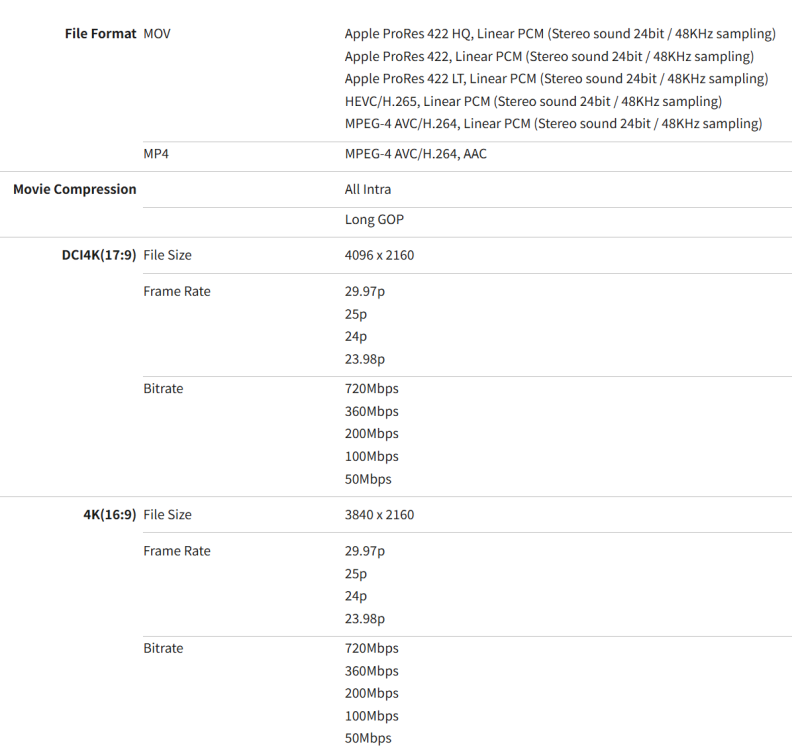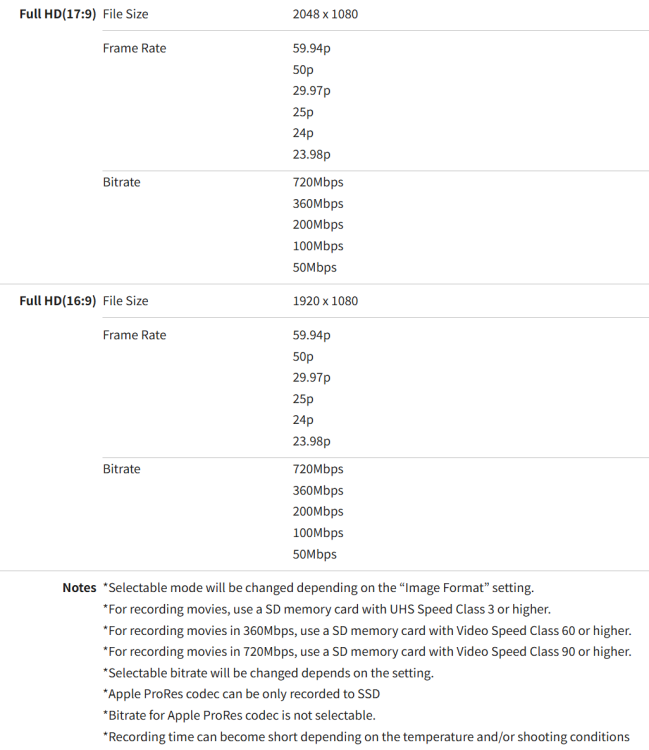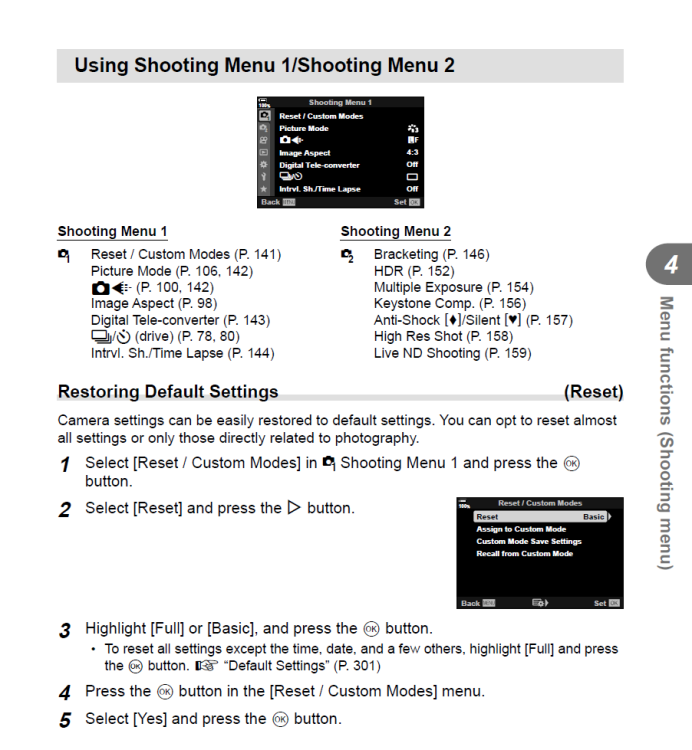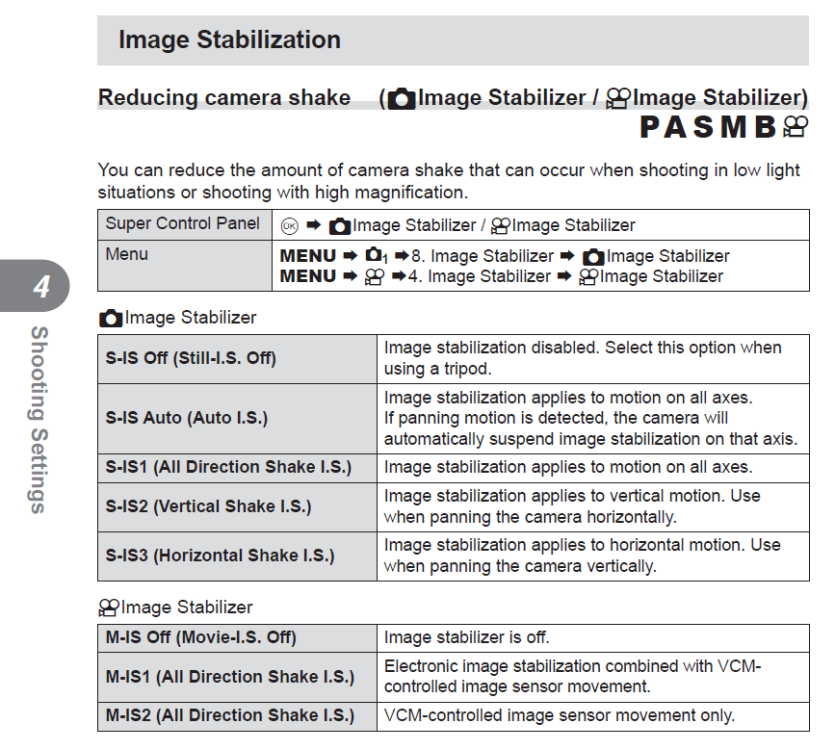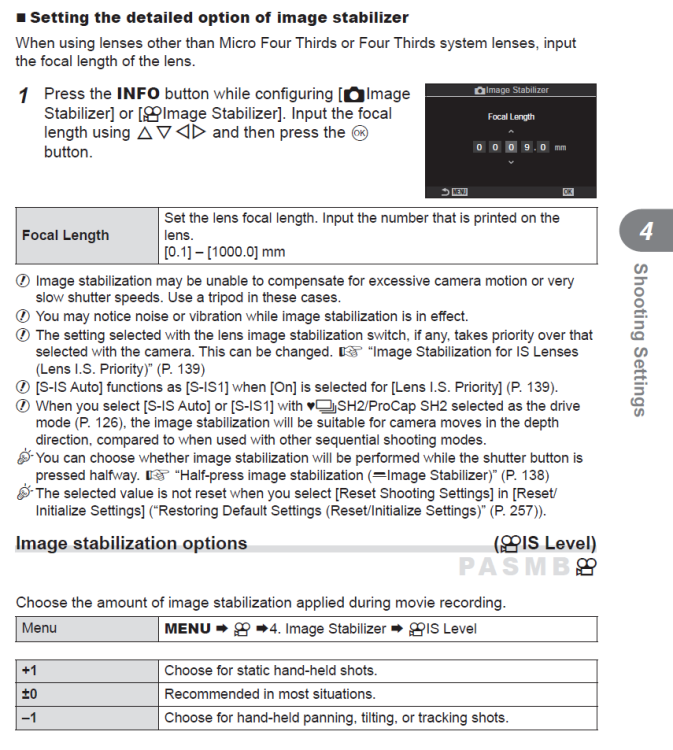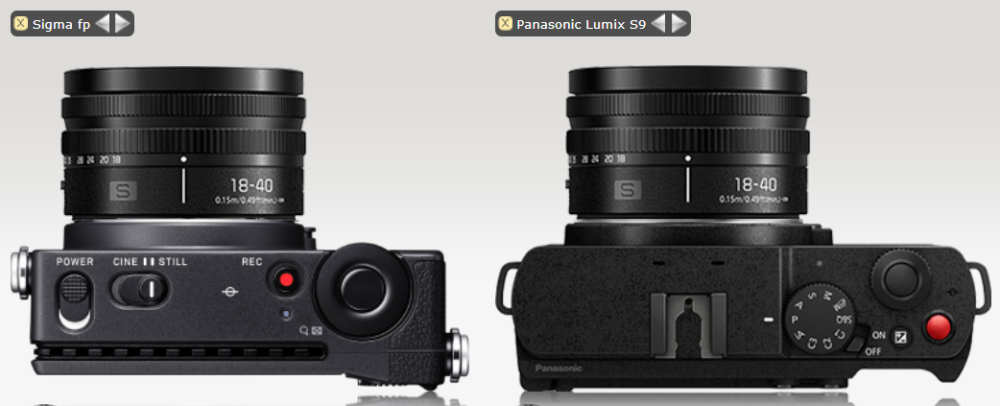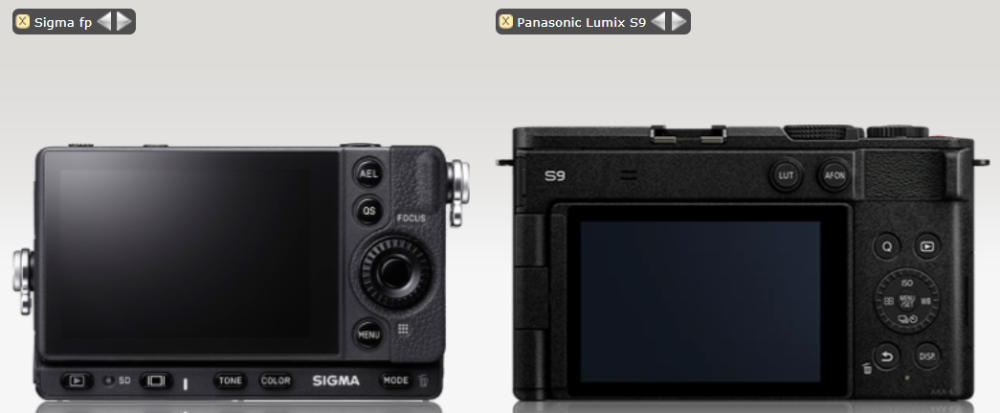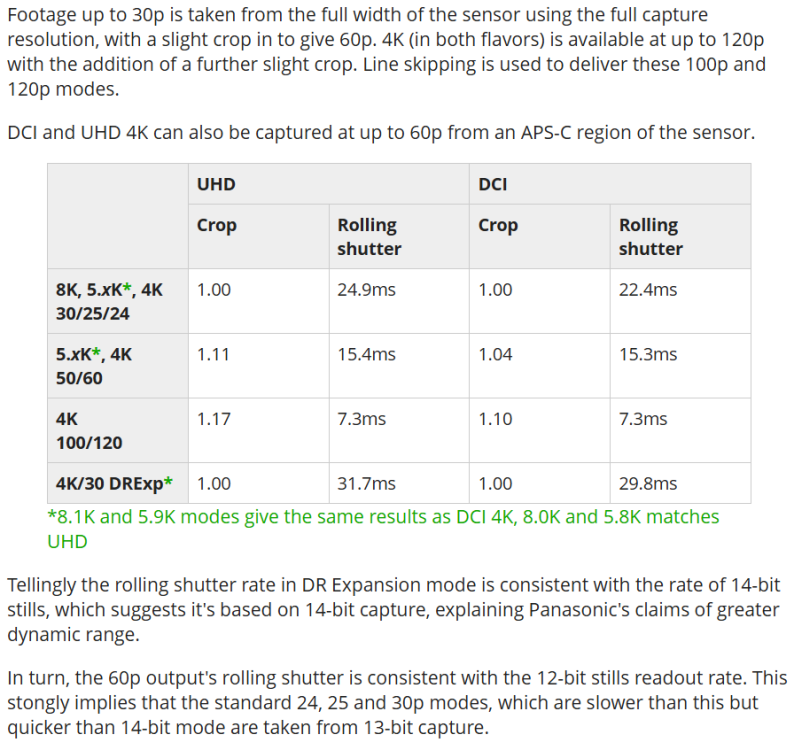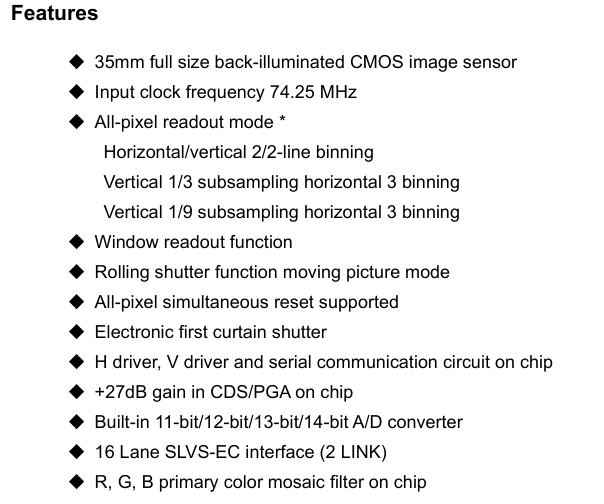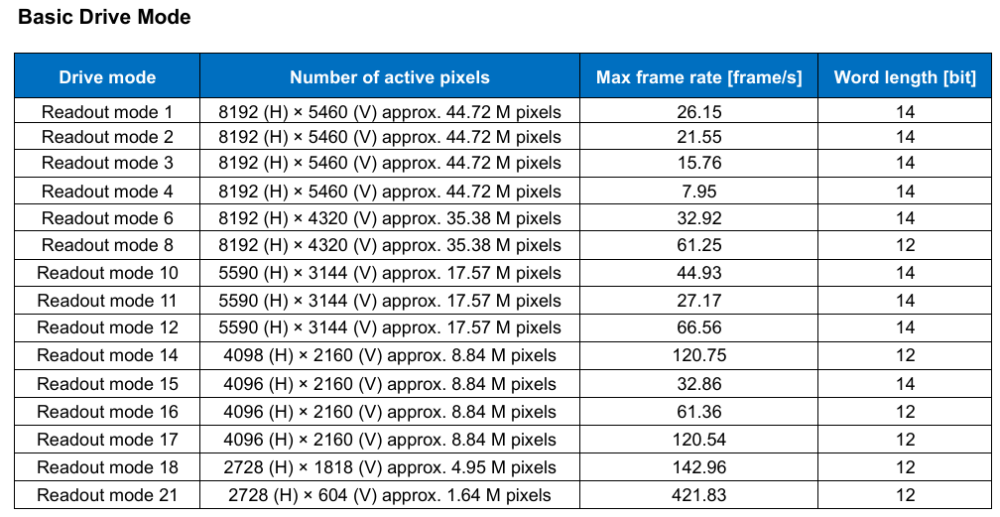
ac6000cw
Members-
Posts
683 -
Joined
-
Last visited
Content Type
Profiles
Forums
Articles
Everything posted by ac6000cw
-
-
From the press release on dpreview: ...and from the Fuji product page:
-
AFAIK, after a 'full reset' of the settings (see 'Shooting menu 1 -> Reset/Custom modes -> Reset -> Full), it defaults to using card slot 1 for everything. As this is a used camera, I'd recommend doing a 'full reset' anyway - the options are so complicated that you don't want someone else's preferences to start from...
-
I feel the same about the ZV-1 - I bought it mainly as a pocket-sized video camera, but I'm actually liking the stills from it more (I find the video quality is a bit so-so). Turning it on/off by opening/closing the screen is a great time-saving idea. I'm also finding the S9 + 18-40 lens quite fun - the limited amount of buttons and dials (and no EVF) means there's fewer decisions to make, so it becomes more of a point-and-shoot experience (and in traditional Panasonic style, you can set it up to shoot basic shutter-priority video when using the record button in photo mode - no need to operate a photo/video switch first). Almost the perfect hybrid for me.
-
C4K/UHD 60p is softer on the OM-1 than 24/25/30p - see this dpreview video stills comparison Sharpest video modes are C4K/UHD at 24/25/30p 10-bit. Re. the IBIS performance - I don't own any manual lenses, so can't test the IBIS in that situation, but I often use non-stabilized long telephoto lenses like the Oly 75-300mm and Pana 100-300mm (with lens OIS turned off) for wildlife video. With the video stabilization 'IS Level' set to +1 (the highest setting) I can get usable handheld video at 300mm provided I'm leaning against something or sitting down to provide a bit of extra stability. Is the video stabilization working OK with native MFT lenses? If not, I'd suggest doing an 'Initialize All Settings' and starting again (especially if this is a used camera). Note that some of the stabilization settings are separate for stills and video, so you might need to set the manual lens focal length separately for stills and video:
-
After sitting on the fence for while, after the recent price reductions and a 'used - like new' deal popping up, I bought that combo. Handles rather like a slightly larger and heavier GX85, with much better video quality and C-AF - pretty much as I hoped/expected. That would be nice - but I suspect the more expensive S-series cams would get that first (if it happens at all).
-
I bought the S9 + 18-40mm kit as a 'used - like new' deal recently in the UK for about £1100 (including 20% sales tax). With the recent price reductions that kit is only £1299 brand new (and only £150 more than the body alone). Quite liking it so far, feels very solid in the hand and the lack of a front grip isn't as much of a problem as I thought it might be. Pretty good value (at the current pricing) for what you get, I think.
-
...and in L-mount, there's always the Pana S9 - not much larger and heavier than the Fp (both fitted with the Pana 18-40mm collapsible zoom below) - and you get IBIS too:
-
I think pretty much any sector on social media (unless it's very, very niche) is going to be saturated with content. All you can really do is make your content as interesting and easy to watch as possible. If you are going to be on-camera and/or talking to the audience it'll probably take lots of practice and time to develop your 'presentation style' unless you have a natural talent for it. Those things are far more important than small differences in picture quality between cameras etc. that your viewers won't notice. Don't over-think the hardware side of things and buy extra stuff that you think you *might* need (and then waste time working out how to use it) - the KISS principle.
-
I agree, and a decent U3/V30 rated SDXC card can handle 200 Mbit/s (25 Mbyte/s) no problem, which is very high bitrate for long-GOP HEVC and should be pretty much transparent video quality. I've been using relatively cheap 128GB or 256GB Sandisk Extreme or Samsung Pro Plus UHS-1 U3/V30 cards for years (both rated for over 100 Mbyte/s write speeds by their manufacturers).
-
I had a play with an OM-3 a few days ago. I found it uncomfortable to hold, mostly because there's no grip and some of my fingers ended up resting/rubbing on the front dial. With the 12-40mm F2.8 lens on it, the lack of grip etc. for my right hand meant far more of the weight had to be supported by my left hand and arm which got uncomfortable after a while. Also the 'record' button is very close to the nearest dial, so my finger was rubbing against the knurled edge of the dial every time I pressed it. It's too much of a compromise of style over ergonomics for me to be interested. Honestly I think the internals of the OM-1 in an OM-5/E-M5 iii style body would be a more attractive and usable camera, even if the overall size had to increase a bit over those.
-
Just watched it - some quite interesting development background stuff, e.g. how the 'cropless' stabilization works.
-
It does have active cooling (AFAIK the same system as used on the S5 ii). But it's having to deal with a lot more heat due to almost 2x the data rates if reading the full sensor area (compared to the S5 ii), and 8K video is 4x the pixels per frame vs. 4K video so the processing and encoding pipeline is working much harder. Based on the review comments and RS results, the less-than-8k video is oversampled from 8k capture, so probably great quality but a lot of heat to deal with (and short battery life).
-
I agree. It's a tool, it's a piece of design engineering and like all designs it's full of compromises necessary to get a product 'out the door' to meet a price target and make enough profit to make it financially worthwhile. Panasonic are basically in the mid-price, good value area of the market, so compromising on the sensor speed (of a hybrid targeted camera) to meet a lower price point than an R5 ii or Z8 seems reasonable to me. In any case the Z8/Z9 sensor might not be available to them, and the R5 ii sensor probably definitely not. It's a mid-range highish-res camera, not a high-end one. It's launch price is $400 cheaper in cash terms than the S1r was at launch in 2019, which means if you allow for US inflation of 26% over that time it's about 40% cheaper in real terms than the OG S1r - with much better video and AF performance, in a smaller and lighter body.
-
Re: overheating and battery life, this is Geeky Nerdy Techy's comments about it (based on shooting outdoors in 34C temps in Australia) - it should play from 27:09, the 'Overheating & Runtime (Major Warning)' section:
-
I think that pretty much agree. I also agree with Gerald Undone's comment that it should have a general no-oversampling/low rolling shutter option in addition to the normal/extended DR switch. The (line-skipped) 4k120p is around 8ms RS, so we know it's possible, albeit with less DR and less sharpness etc. But at the price (which will fall to sub-$3000 probably fairly quickly), it seems like a lot of camera for the money. If you want 8k video with much lower RS, go buy a more expensive camera...
-
Where does it say that in the CVP video?
-
It's £2,999 in the UK at Wex - pretty aggressive pricing, I think. dpreview initial review - https://www.dpreview.com/reviews/panasonic-lumic-dc-s1rii-initial-review#WNV Rolling shutter figures taken from the review: PetaPixel review:
-
Yes - a mere 4kg and 470mm long (and $6000!)... 😉 (but actually the 315mm long, 2kg M43 OMDS 150-400mm f4.5 TC1.25x IS PRO Lens is even more expensive - £6700 in the UK)
-
They'll both be the Panasonic 'video flagships' of their respective lens mounts, basically, each with (in system terms) their own strengths - e.g. M43 lenses are generally somewhat smaller and lighter, FF has better low-light performance. For example, I regularly happily carry around a bird reserve an OM-1 plus Pana 100-300mm lens (total weight about 1.1 kg), but I'd never want to carry around an S5ii plus Sigma 150-600mm f5-6.3 (total weight about 2.8 kg). Both combos have the same FOV at the long end. At this point in time, I don't really see M43 and FF competing very directly with each other.
-
Canon PowerShot V1– C-Log 3, Built-In ND & Cooling Fan
ac6000cw replied to zerocool22's topic in Cameras
There's already a thread about this camera - https://www.eoshd.com/comments/topic/90124-canon-v1-14”-sensor-16-50mm/ I've owned at least two 'pocket' cameras with a built-in ND - the Pana LX7 and the ZV-1. I suspect they have them because making an iris that closes to e.g. F22 on a small lens/sensor is probably quite difficult (and they don't have filter threads to add an ND), so to maintain 180 degree shutter angle for video in very bright conditions means an internal ND is fairly essential. -
I suspect there's a decent market for an L-mount 'camcorder-style' body if they get the specs and the ergonomics right. Panasonic has the video pedigree to sell something like that, I think.
-
It actually looks like a decent camera (in the ZV-1 sector of the market), especially as it has 4k60p, an internal ND and dual-pixel AF.
-
Assuming the rumors are correct, it looks more like a cheaper R5 ii competitor to me. If it's intended to be a replacement for both the S1r and S1h, it'll be interesting to see what the rolling shutter performance is like. The Sony IMX366AJK sensor 'stephen' mentioned above is rated for 120fps at DCI 4k, 12-bit readout (I guess using 2 x 2 pixel binning with a vertical crop, as it's a native 3:2 aspect ratio), and DCI 8k at 60fps:
-
it's been officially announced - https://www.dpreview.com/news/3287382042/canon-announces-powershot-v1-vlogging-camera From dpreview:

